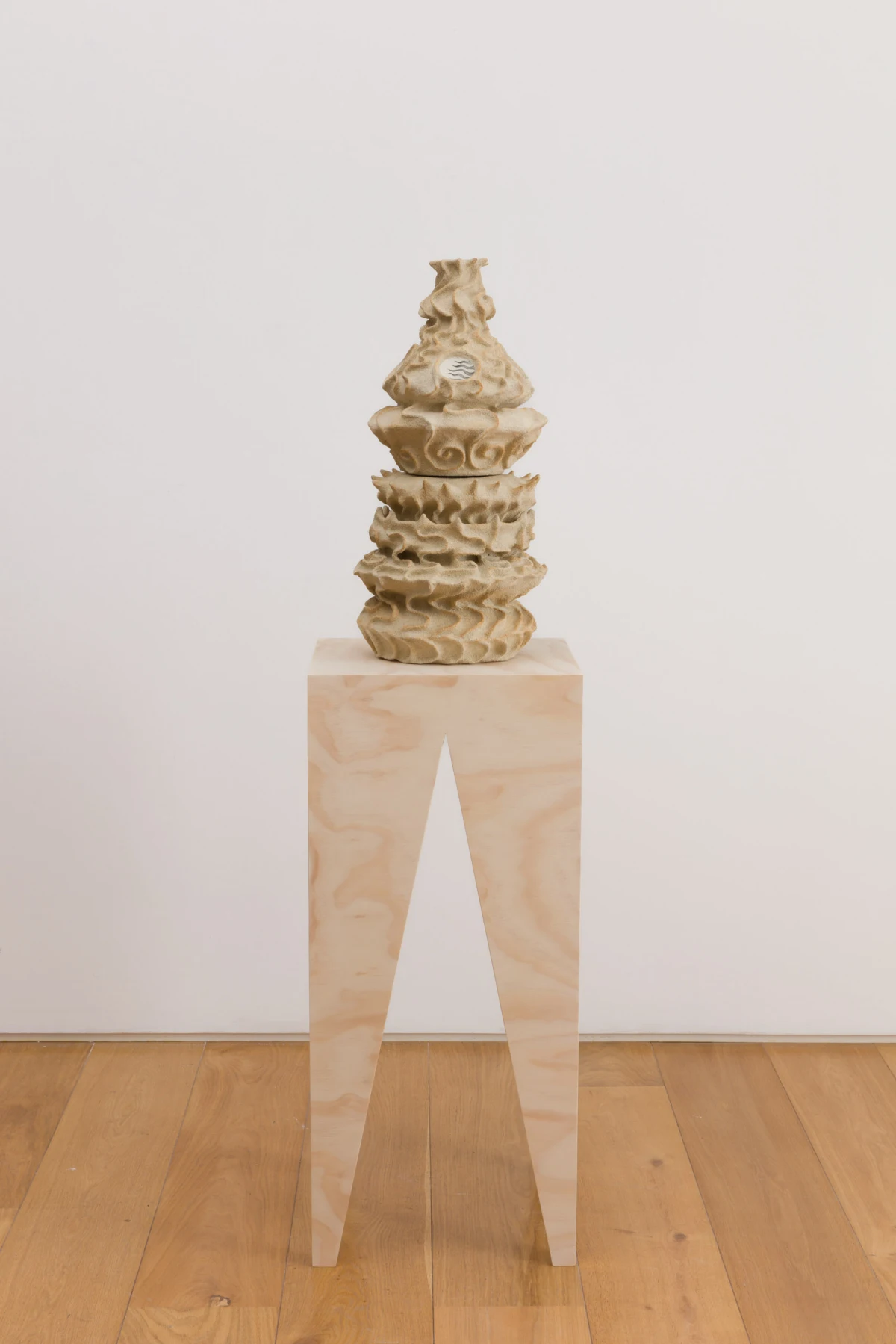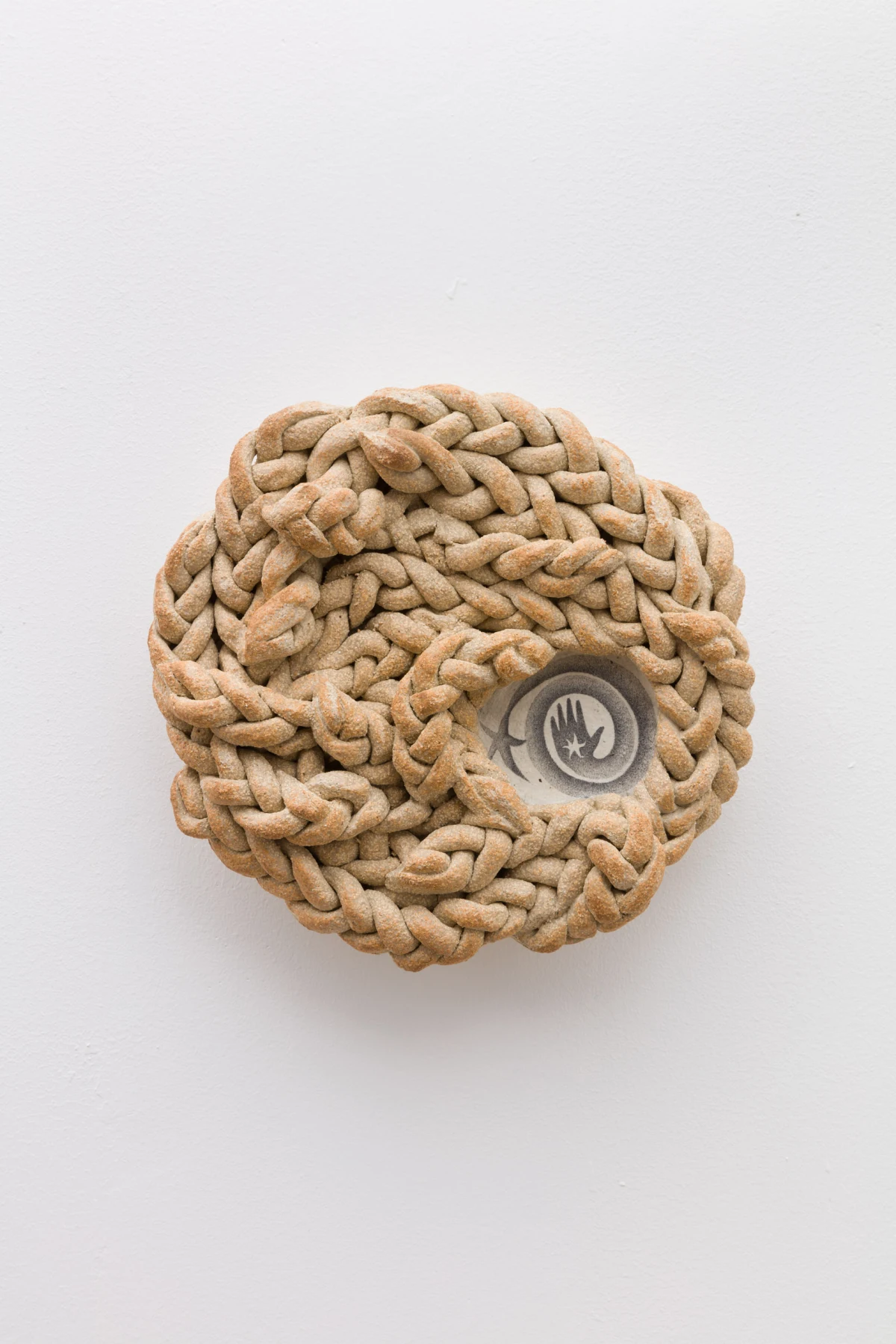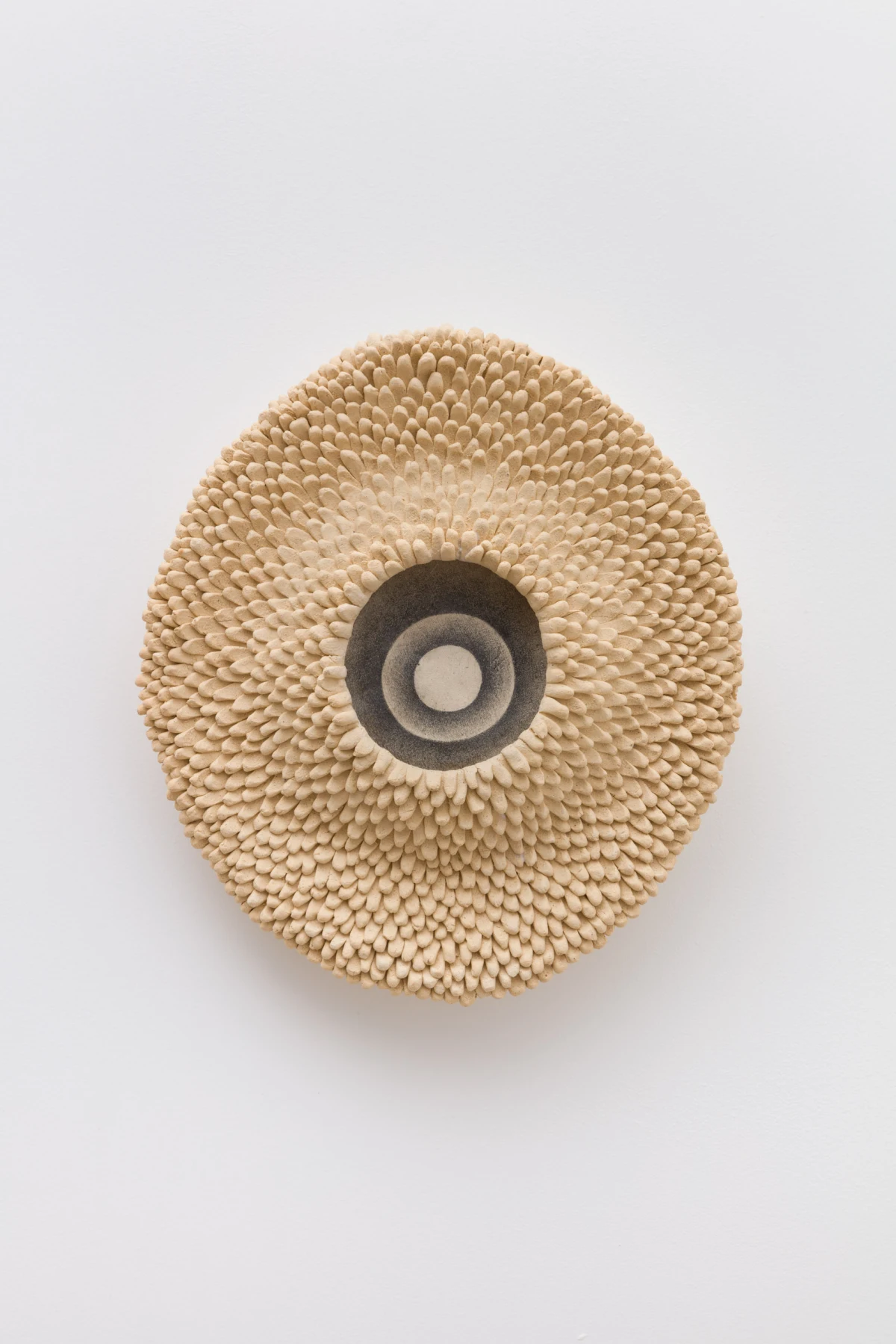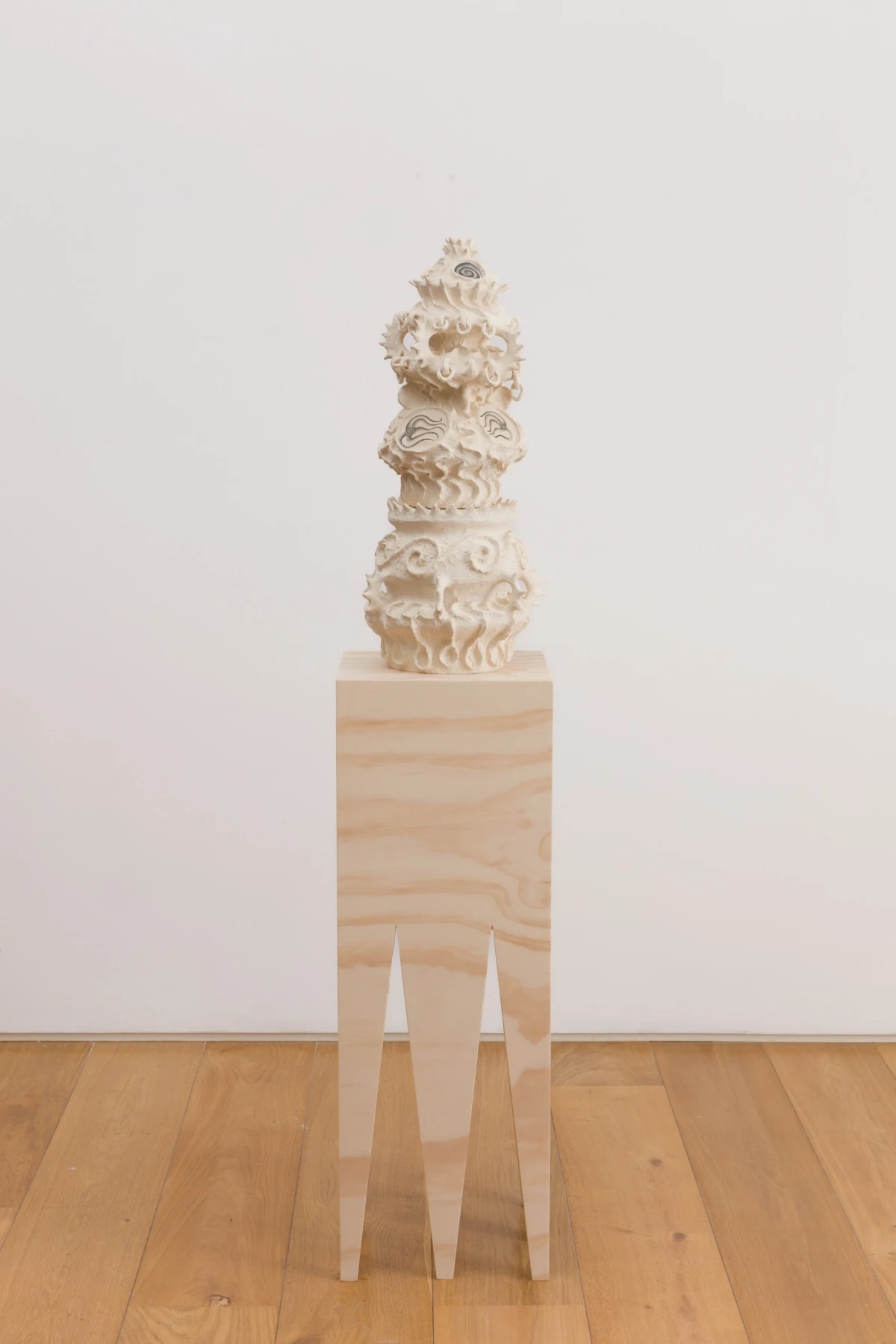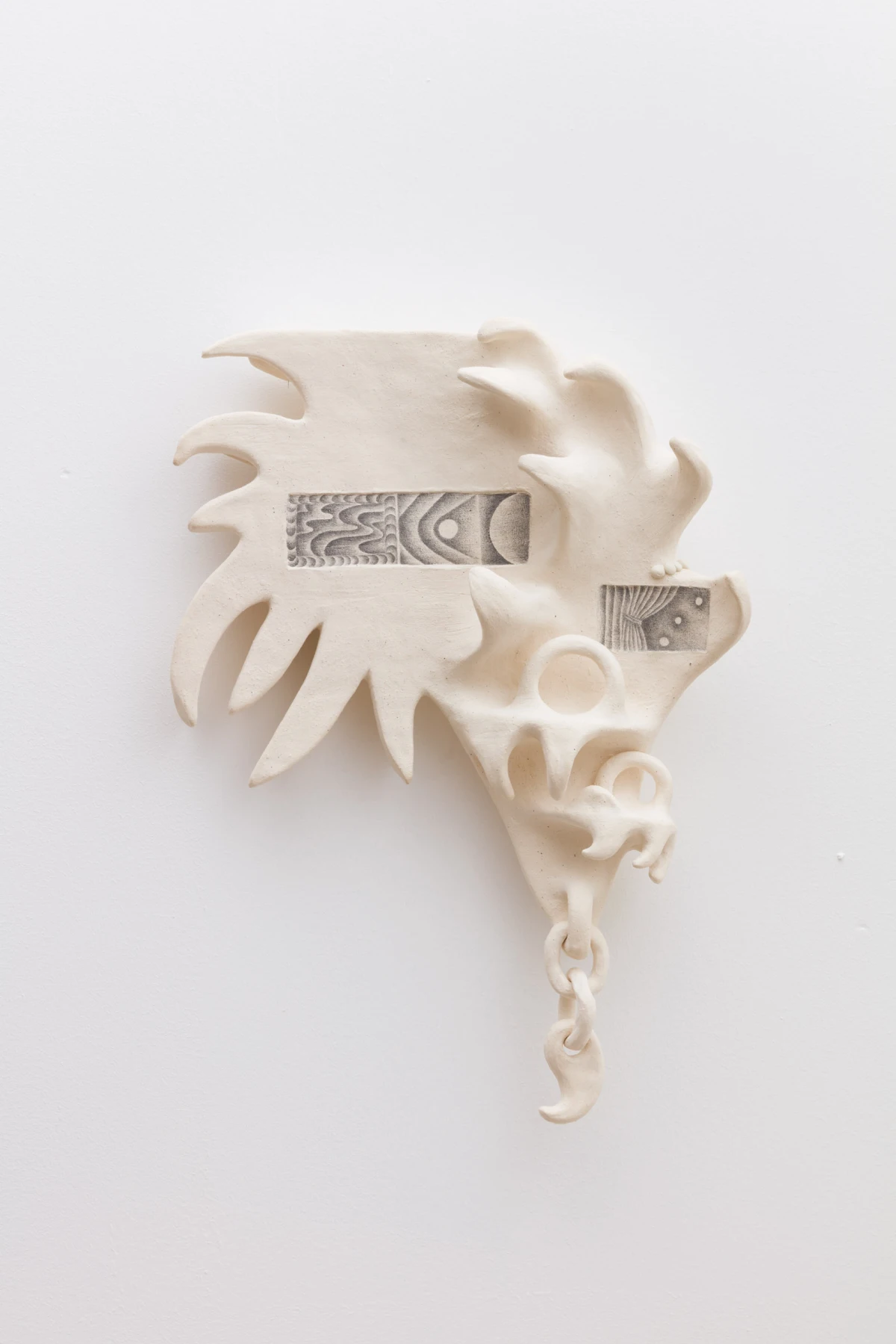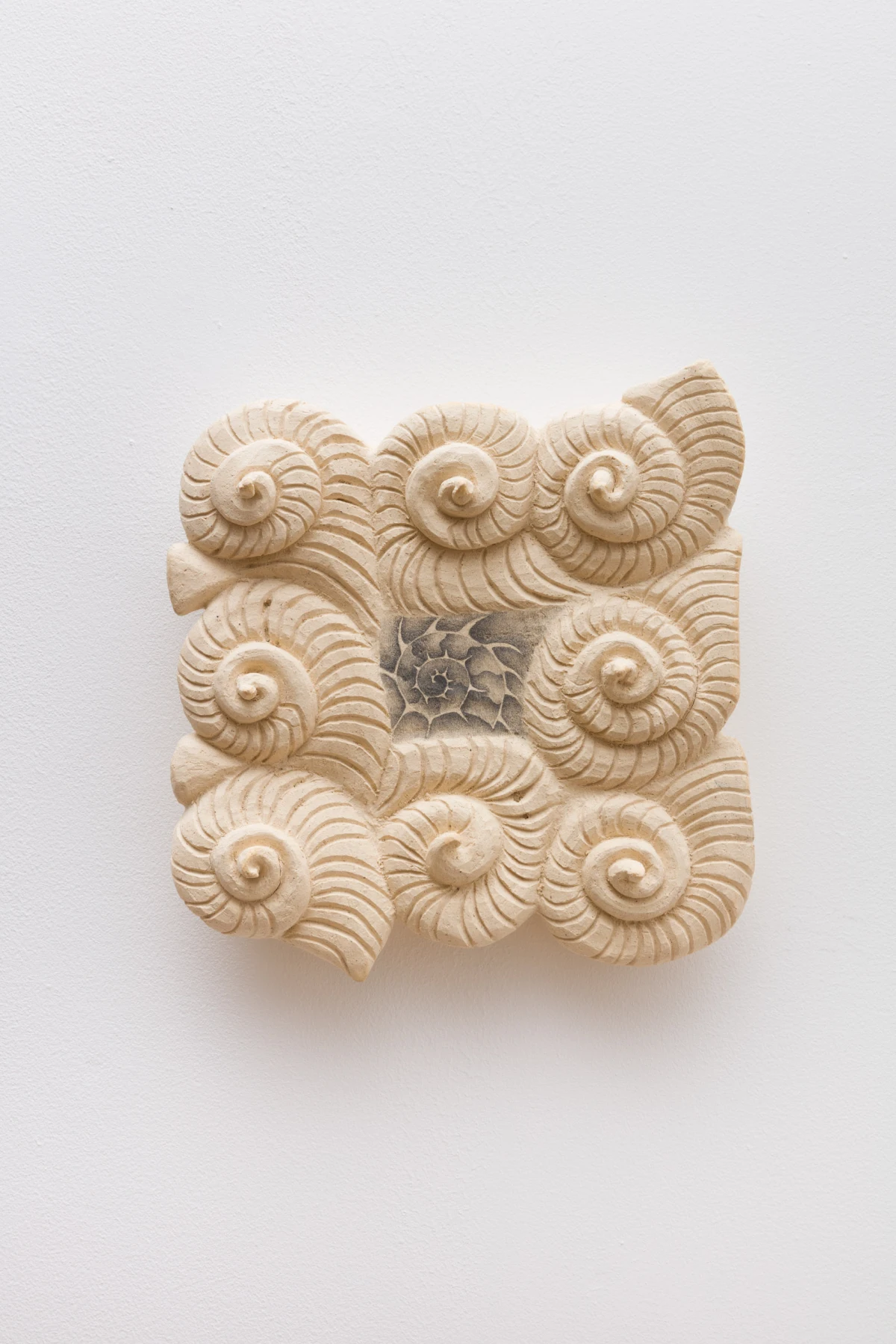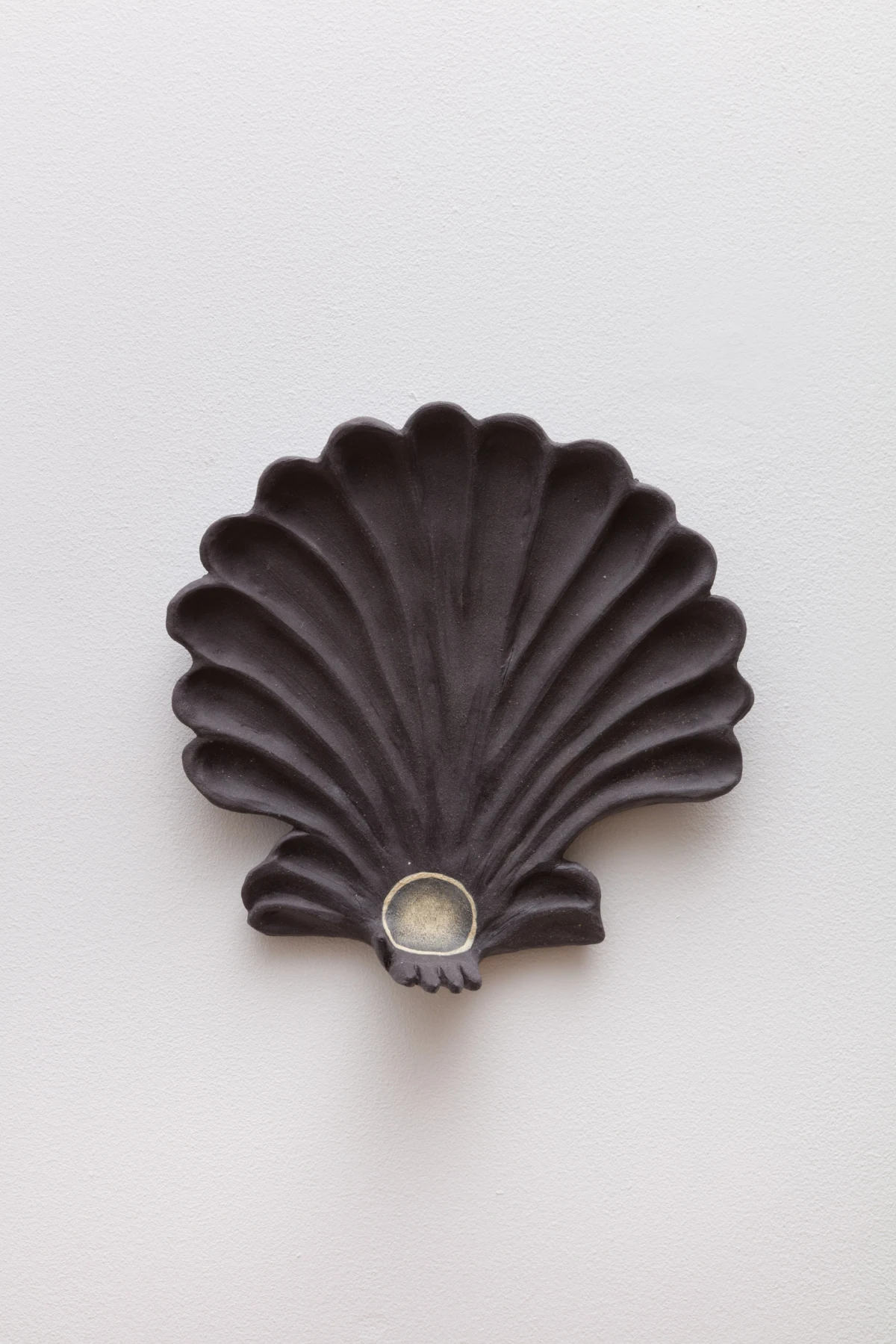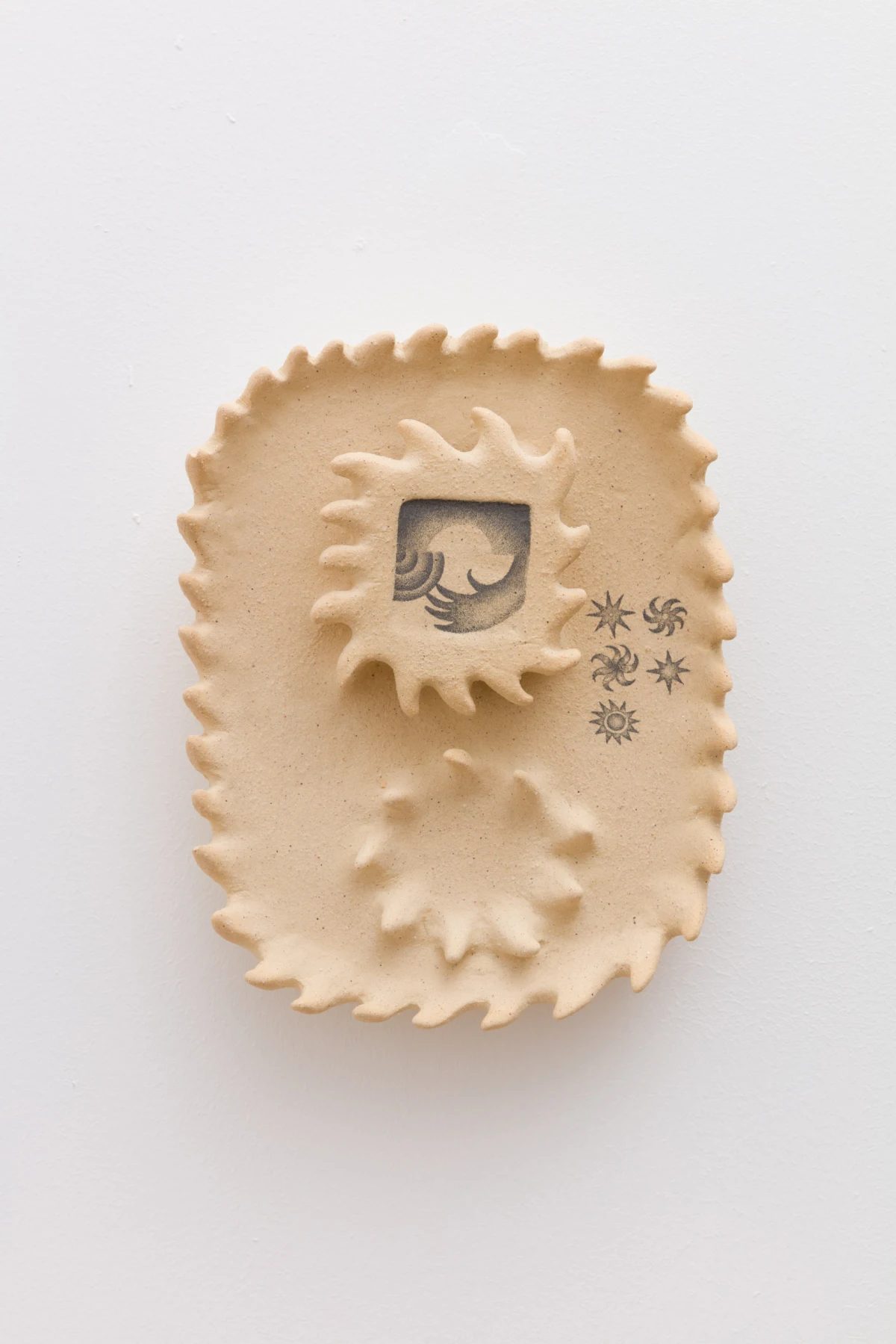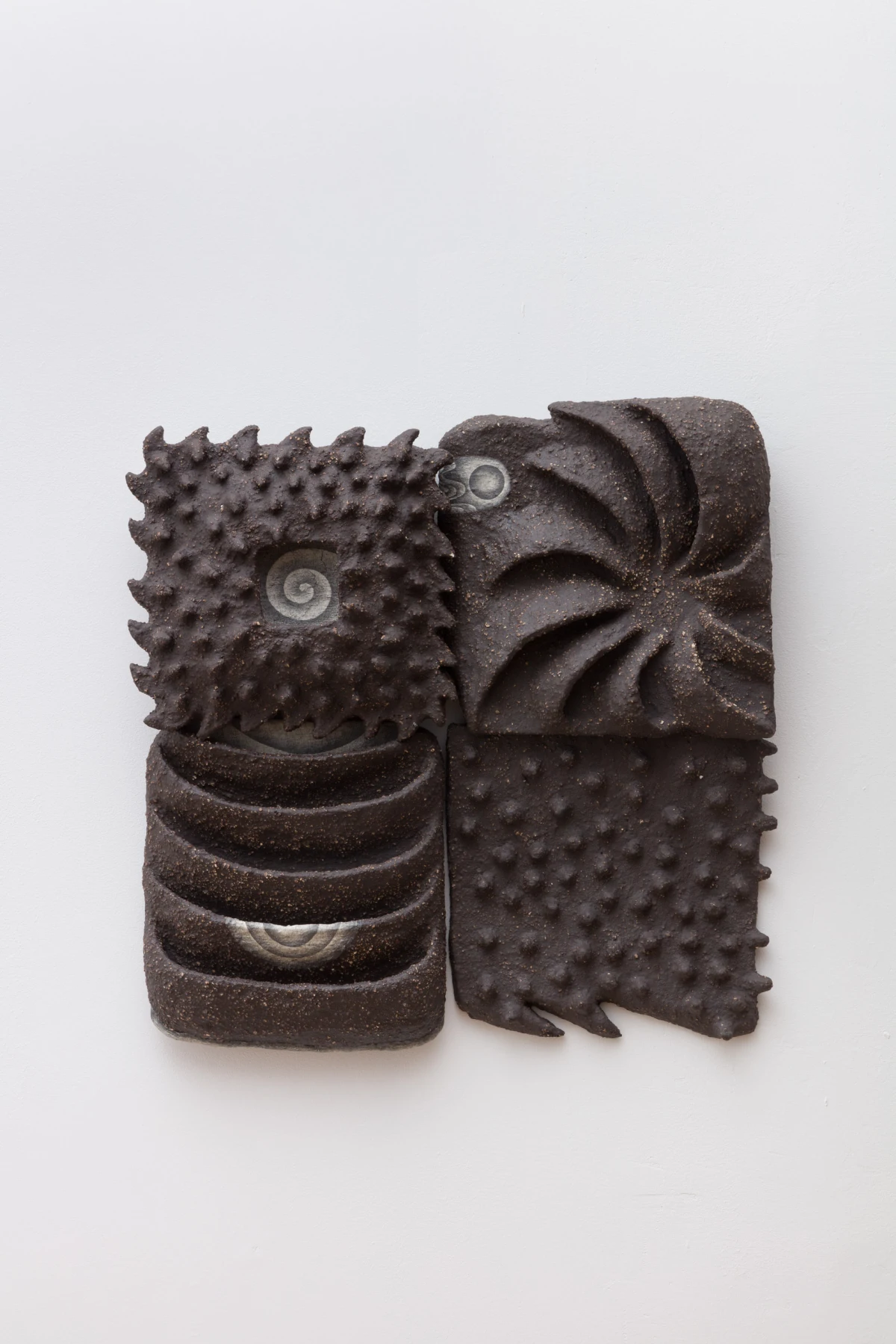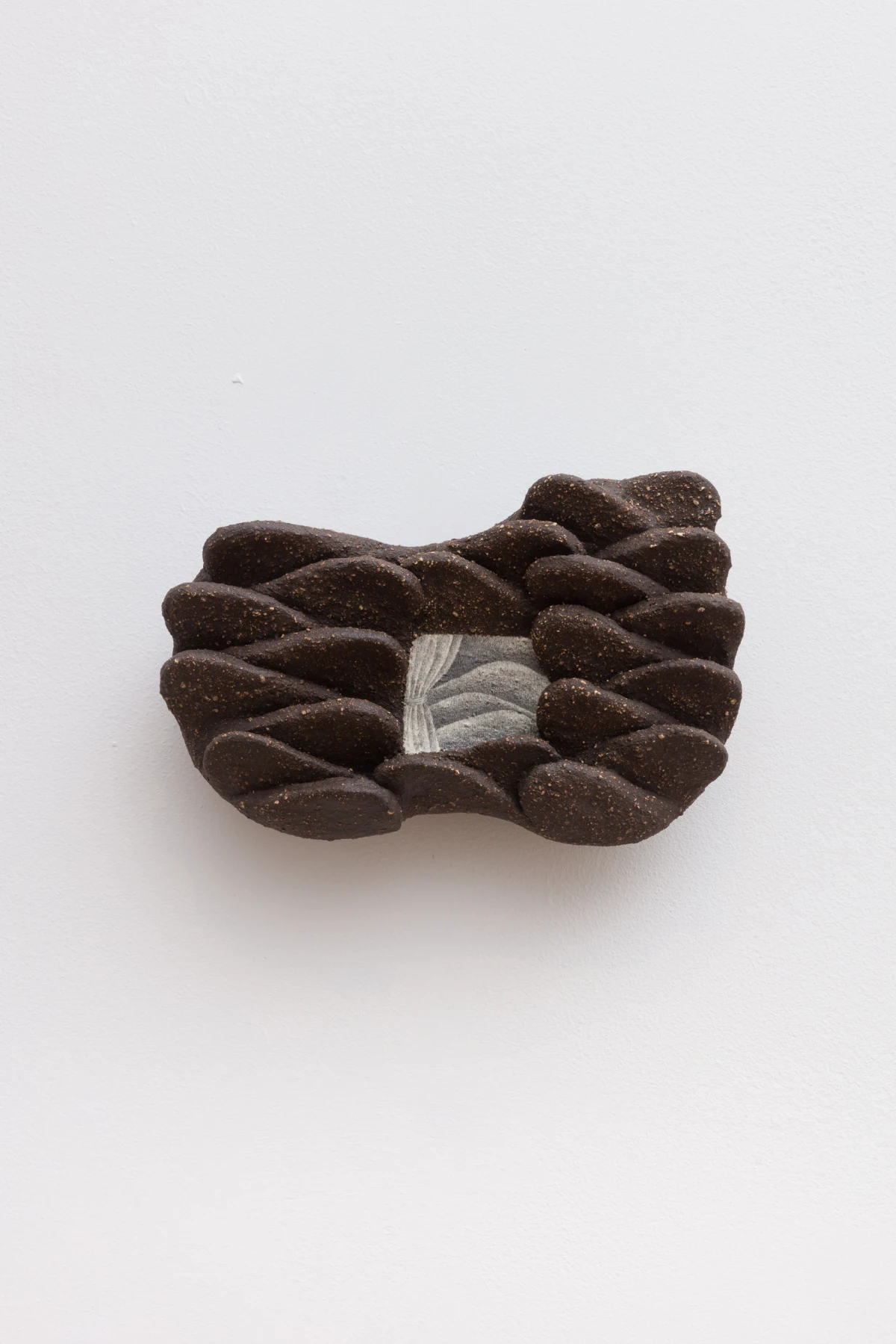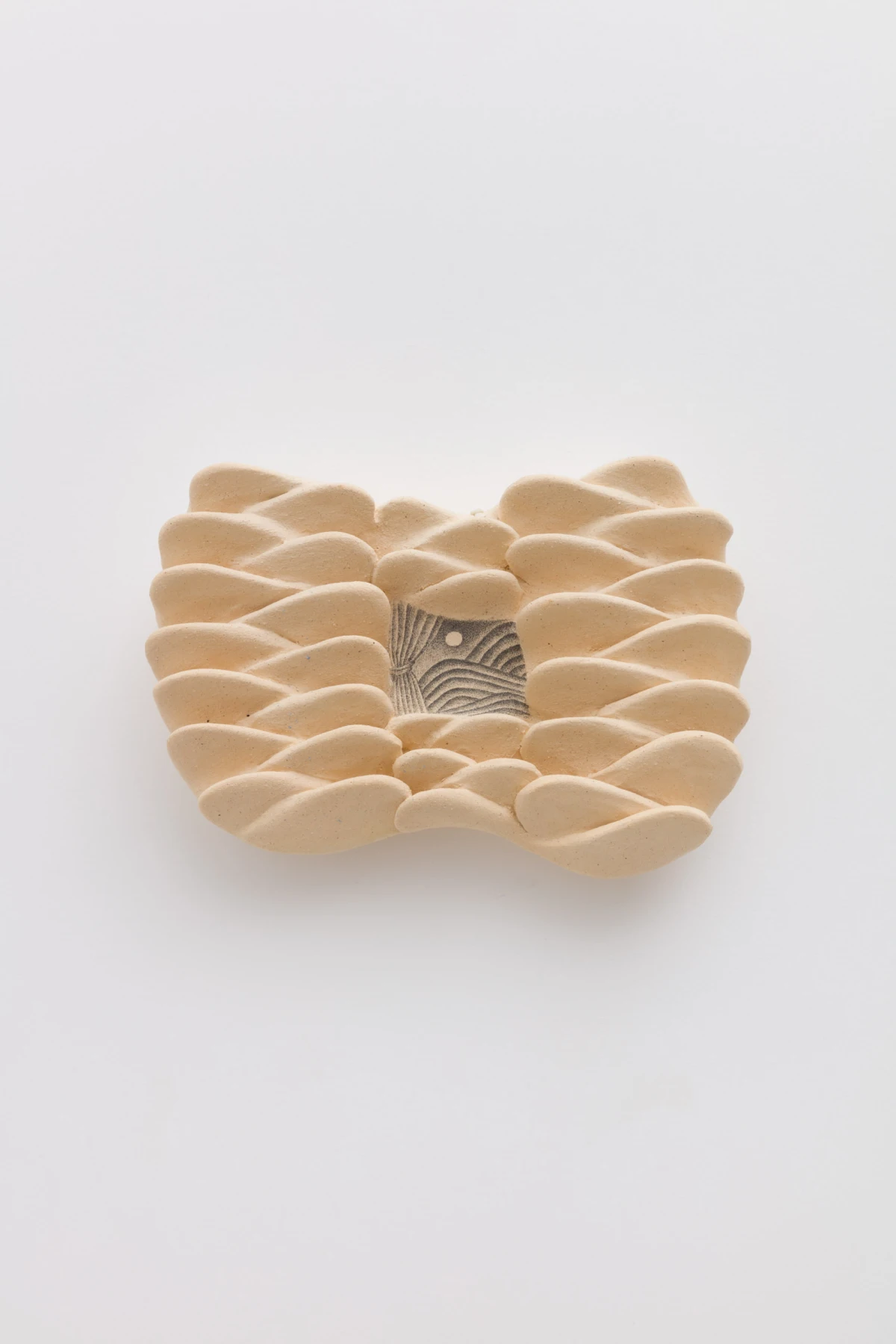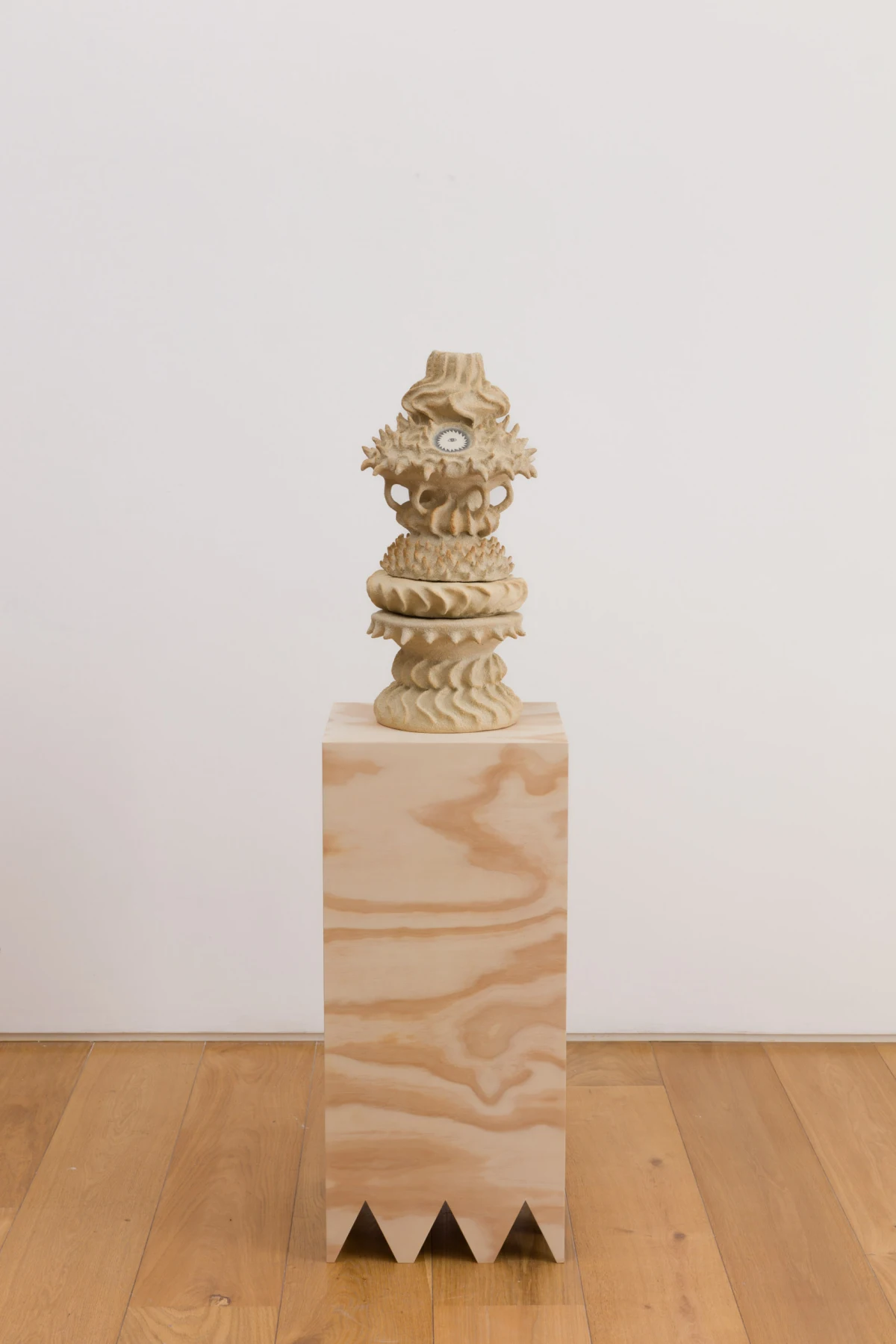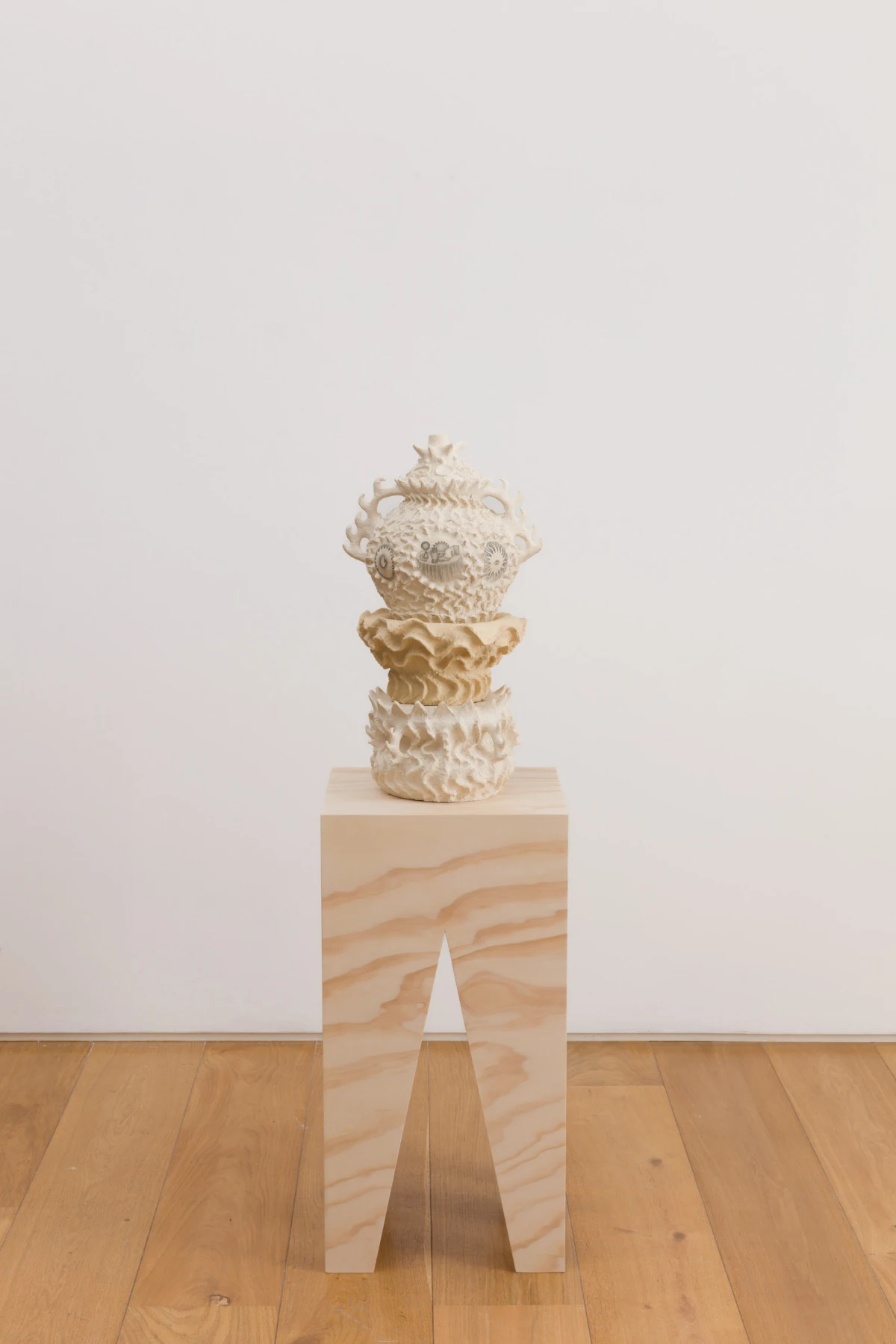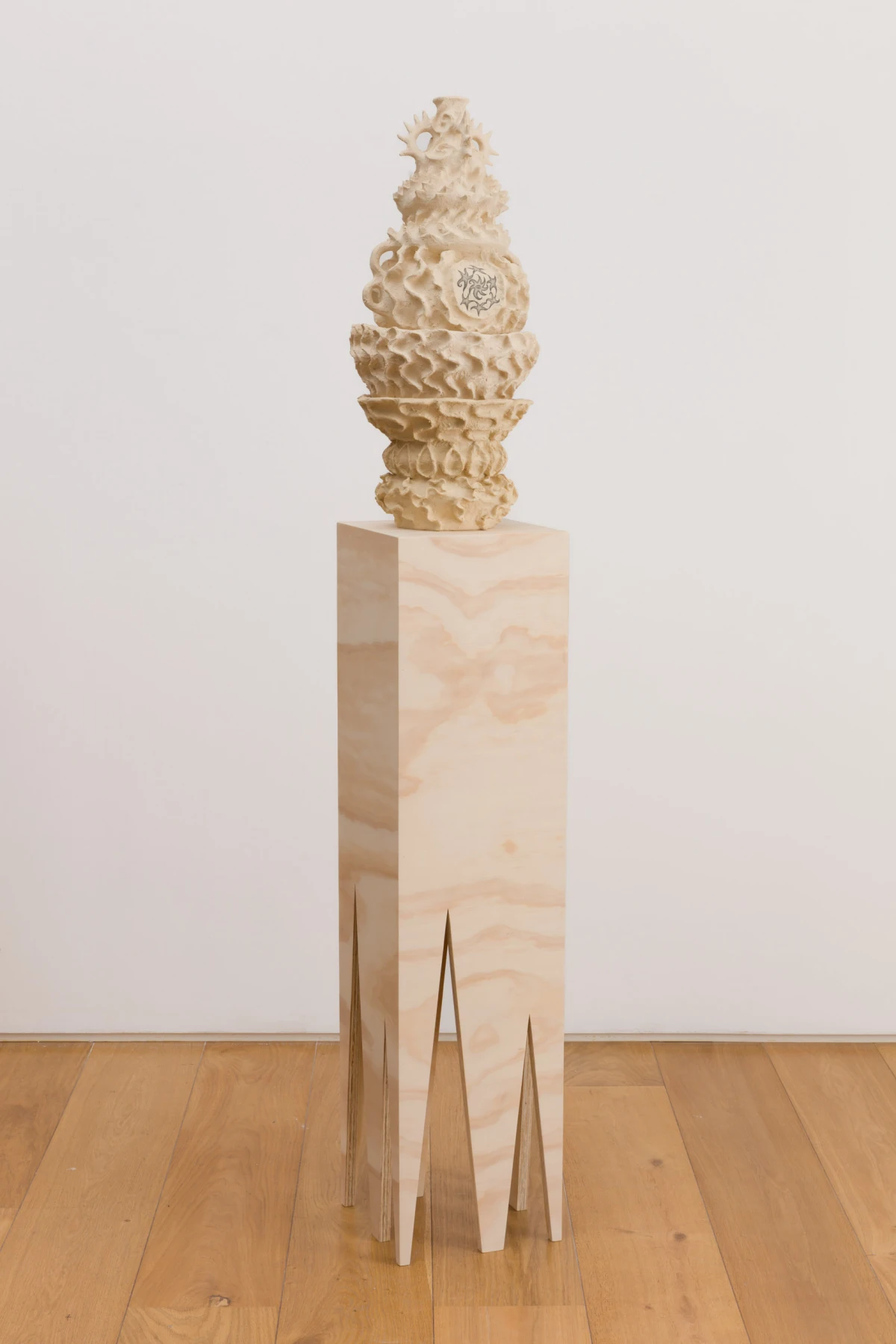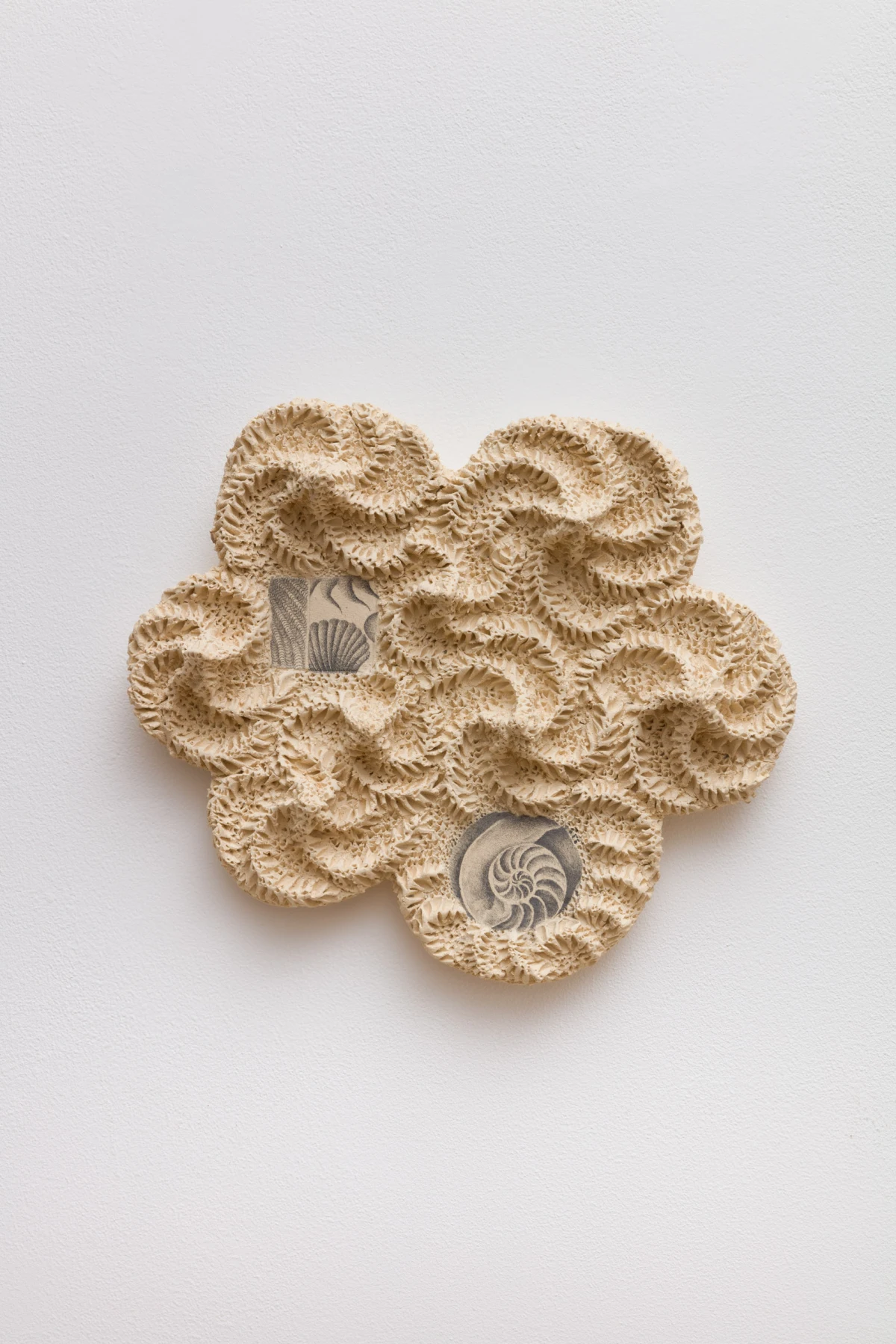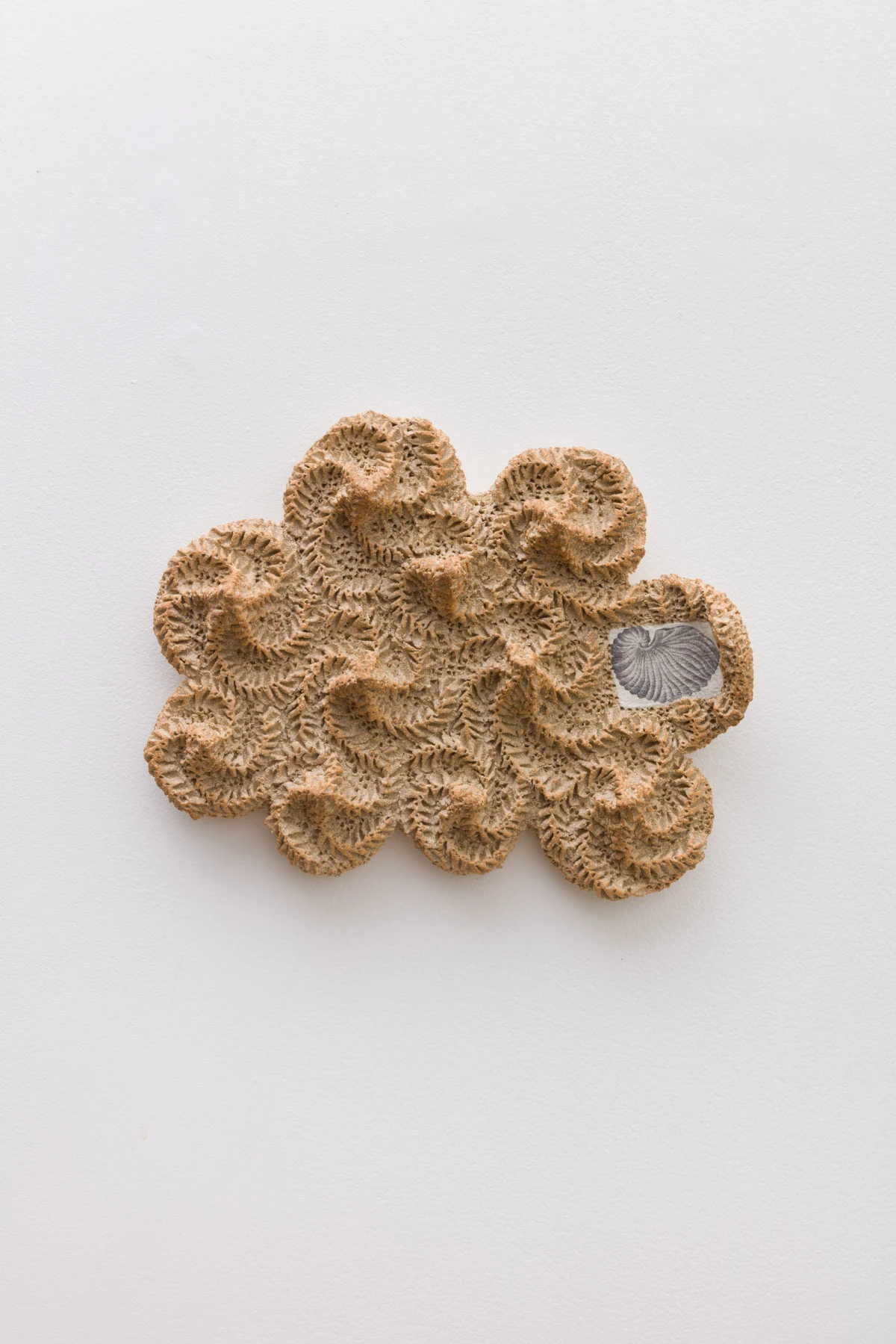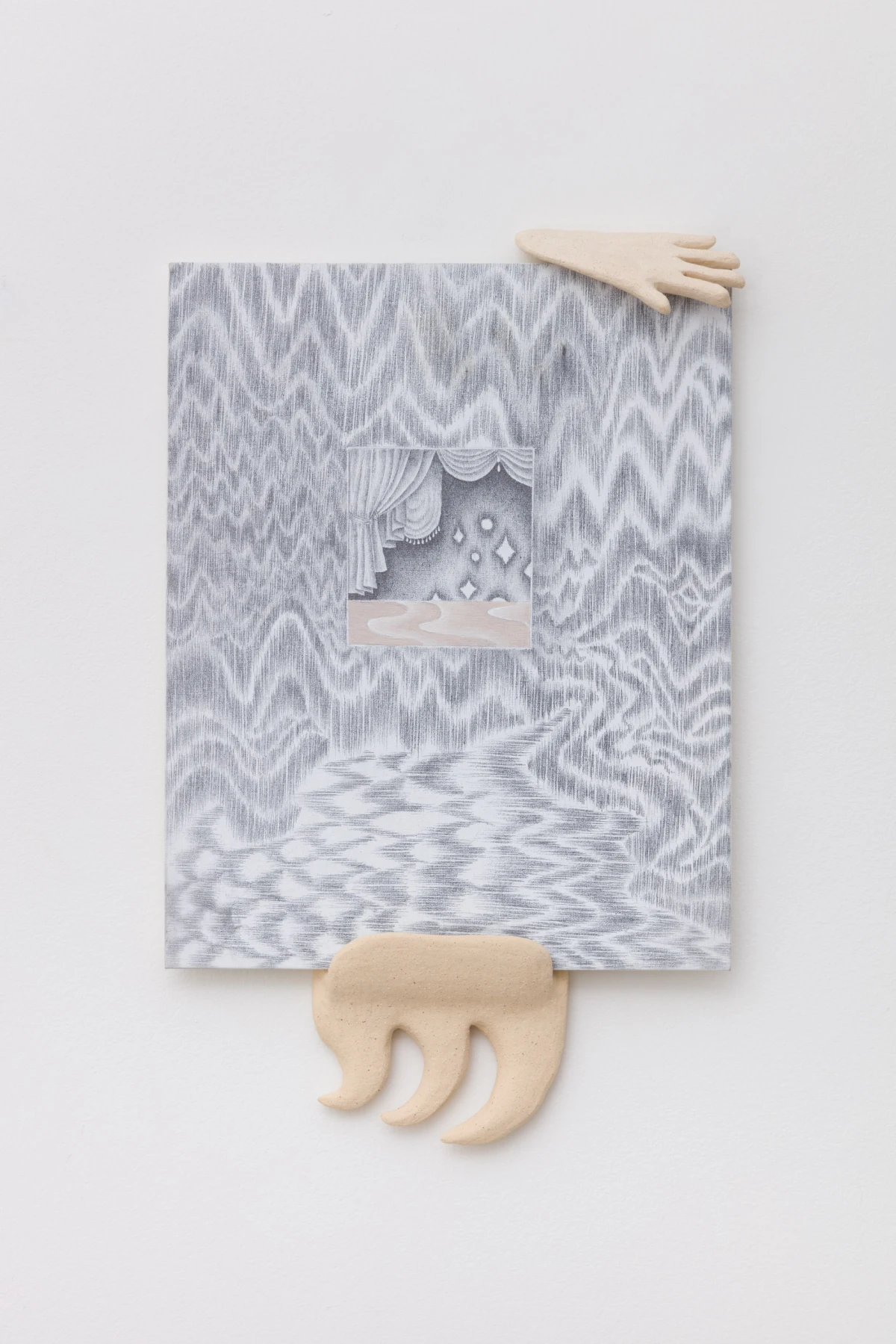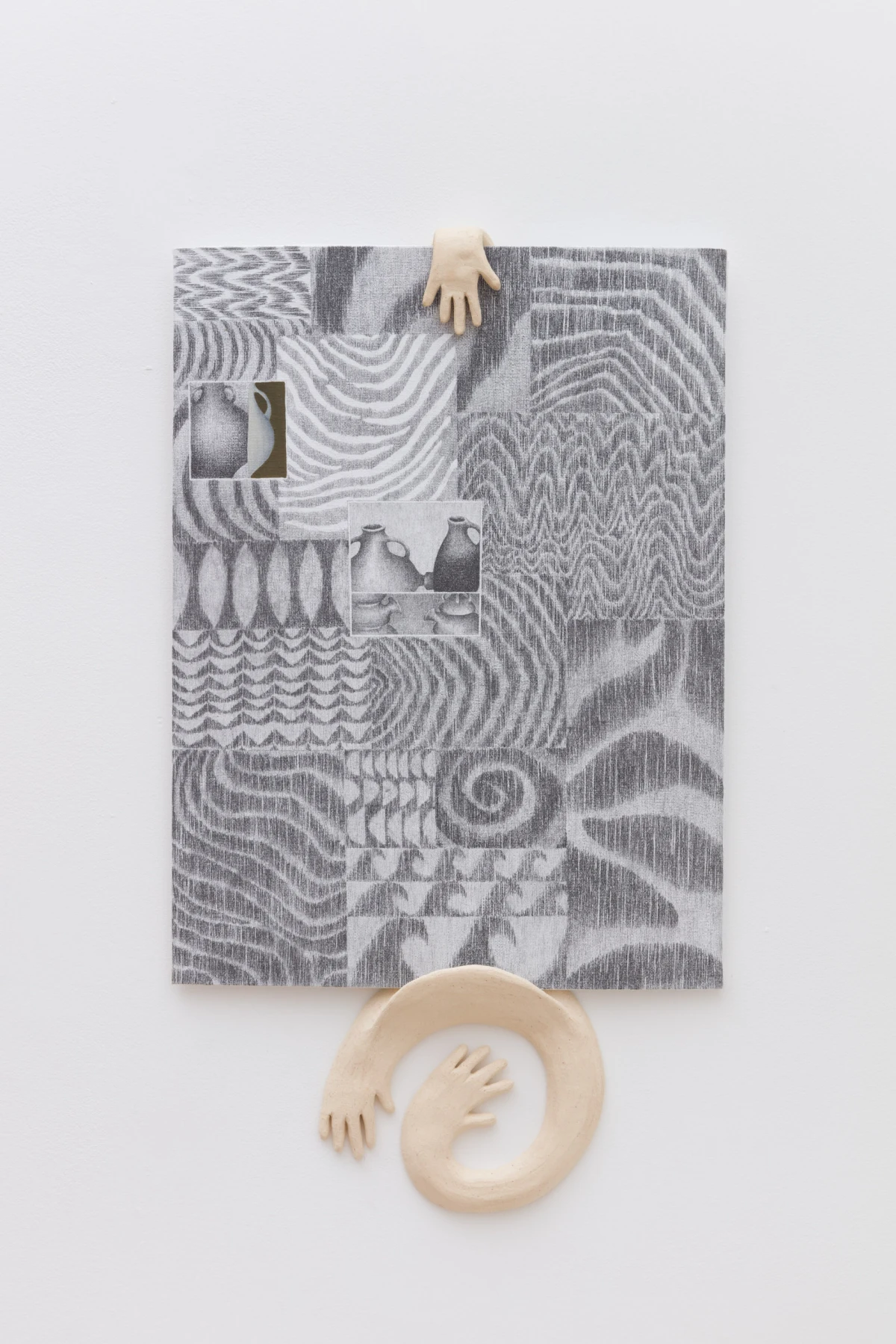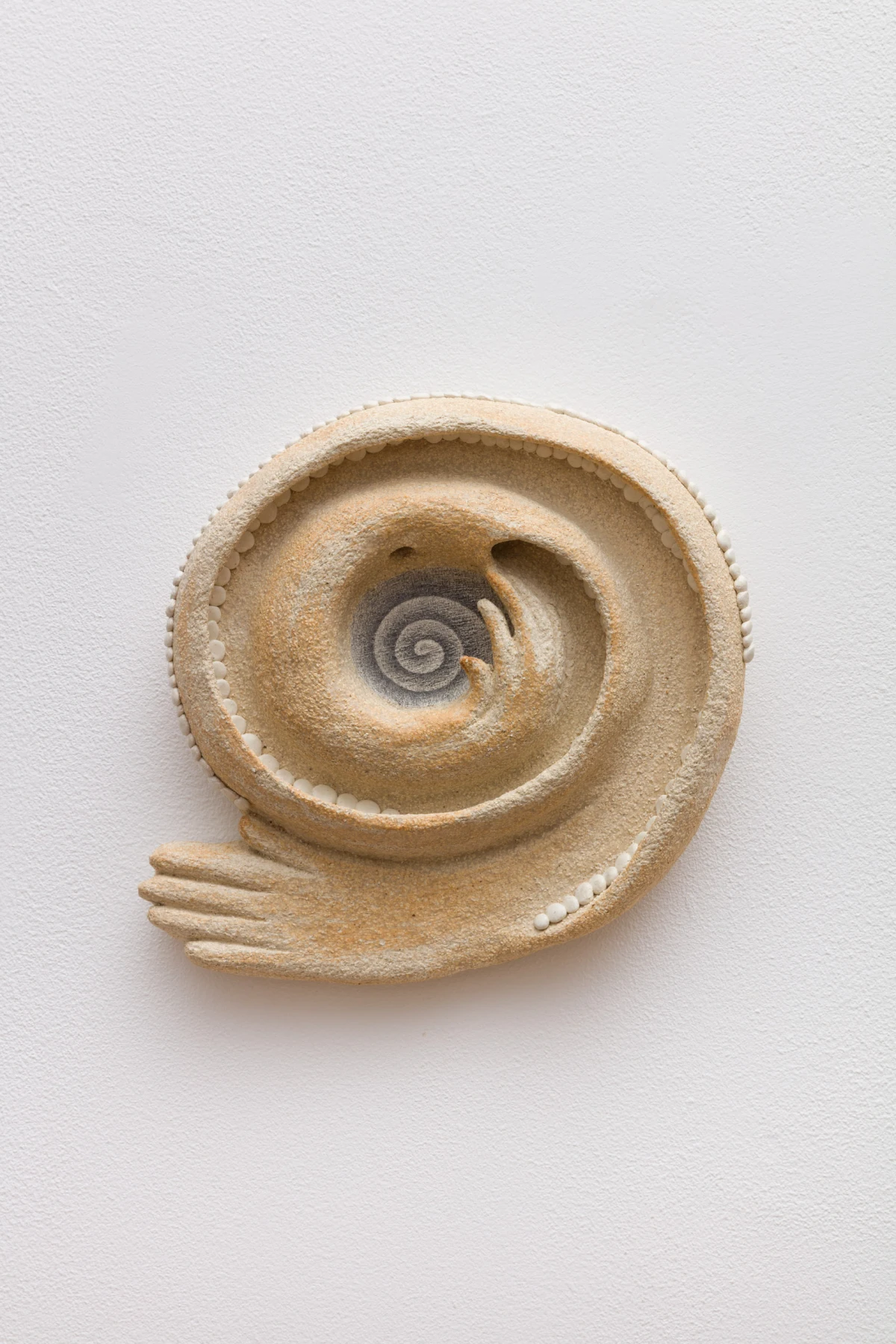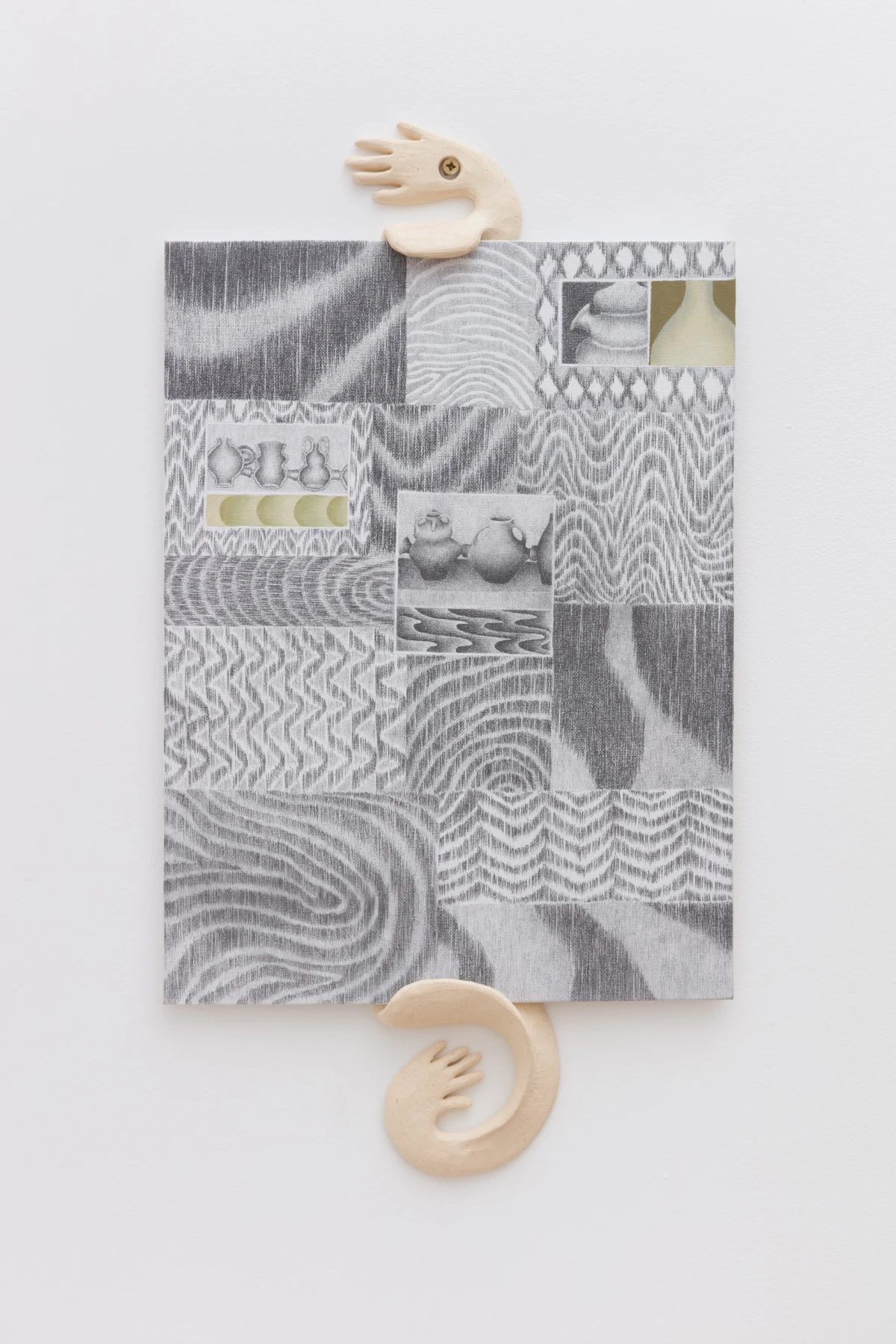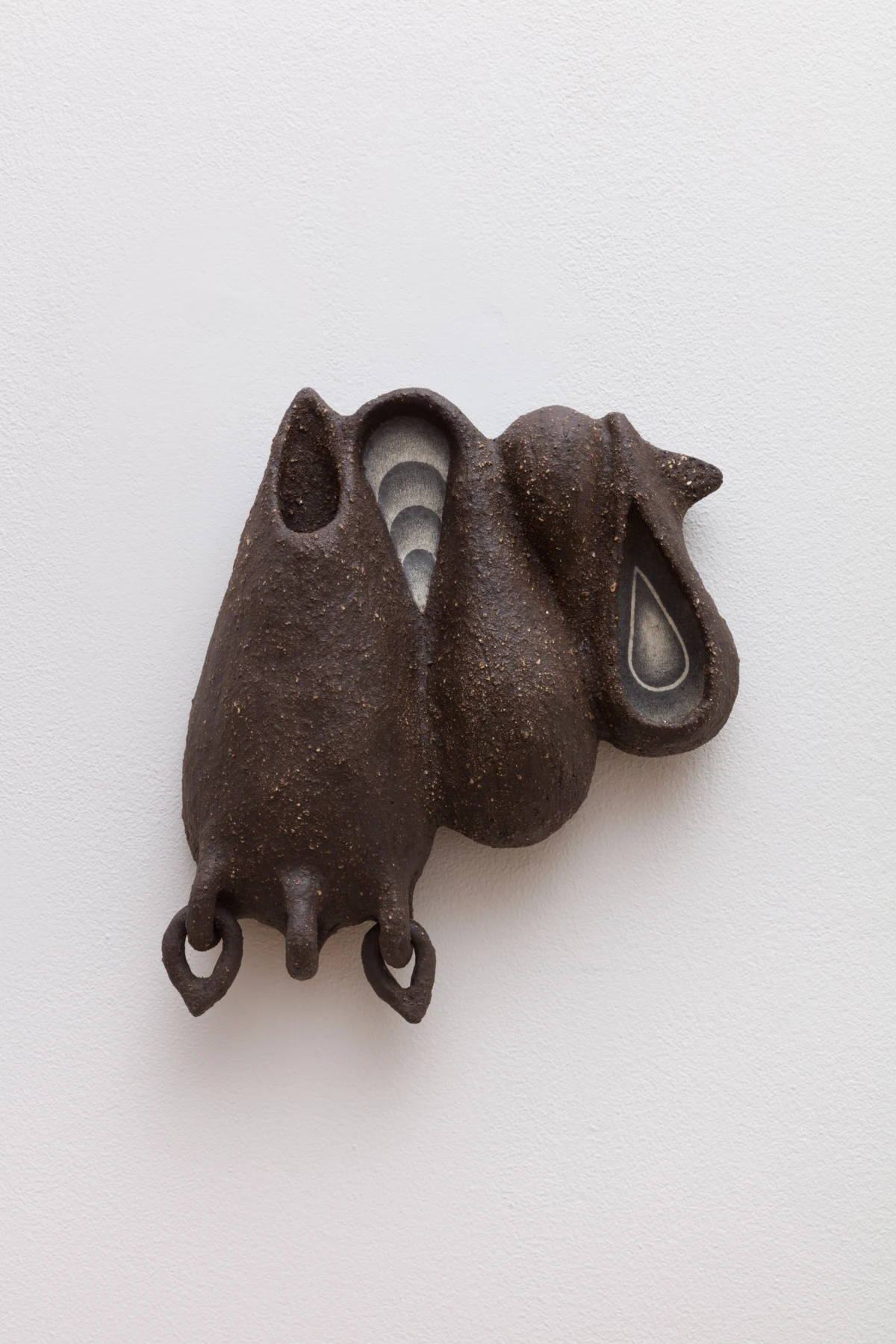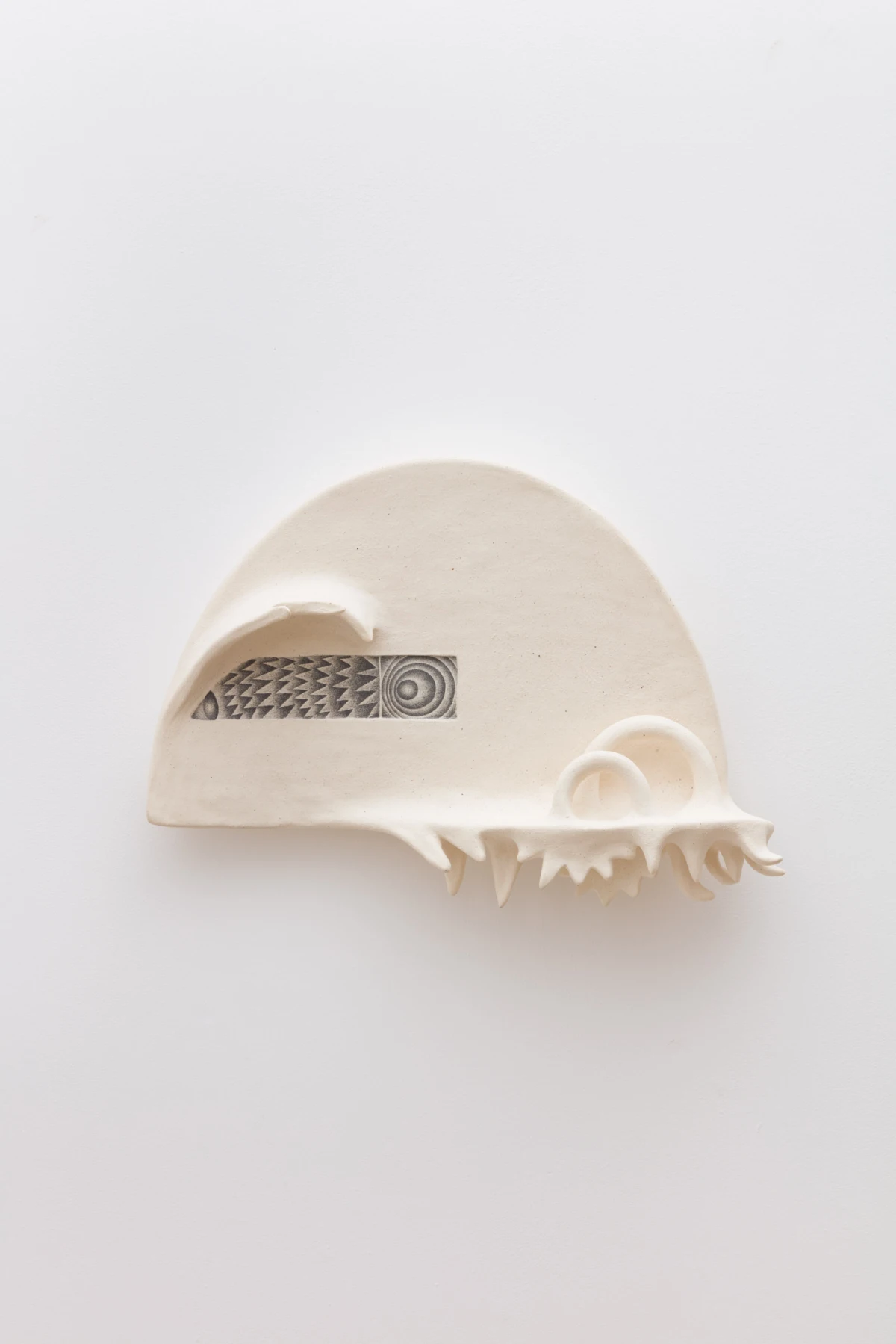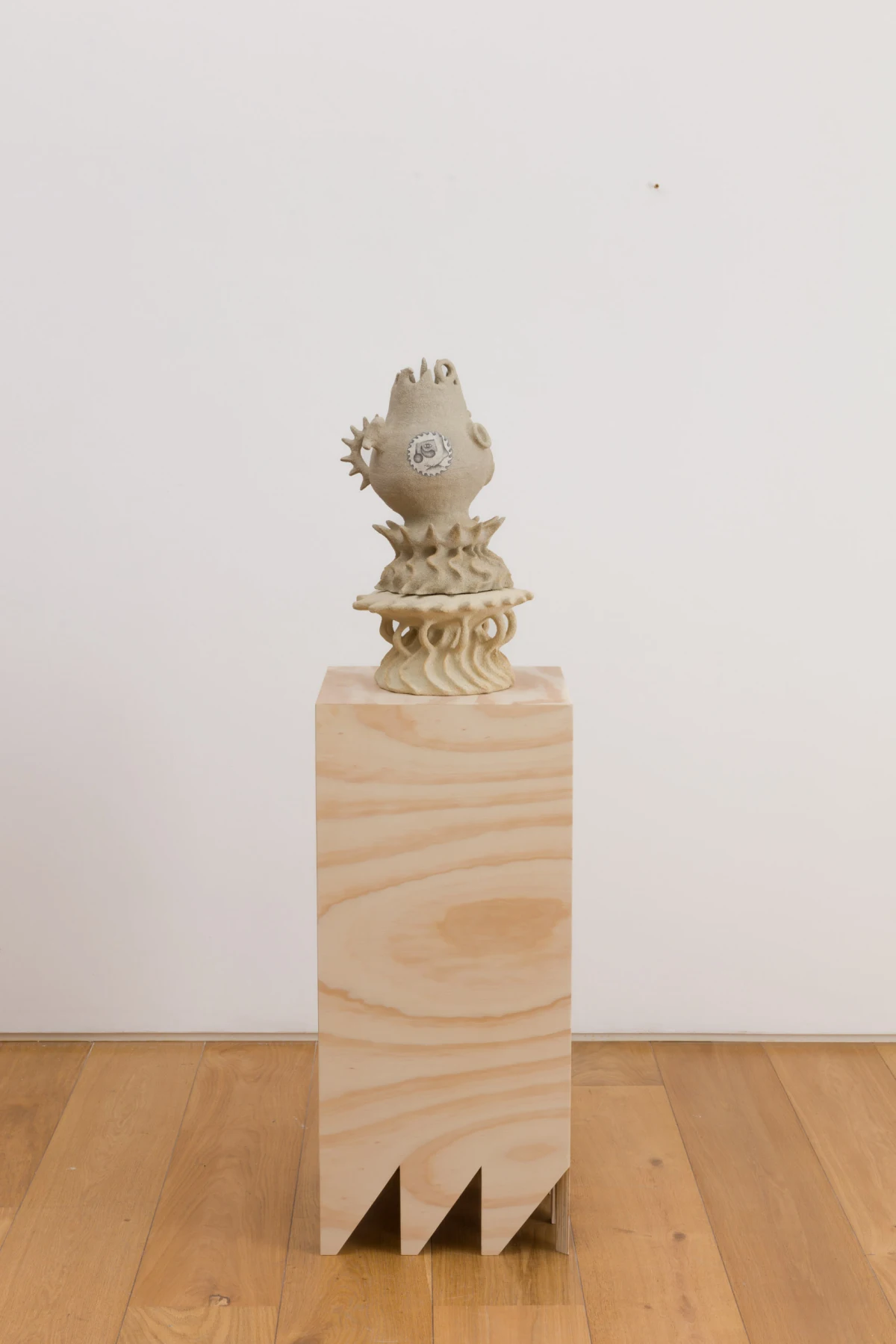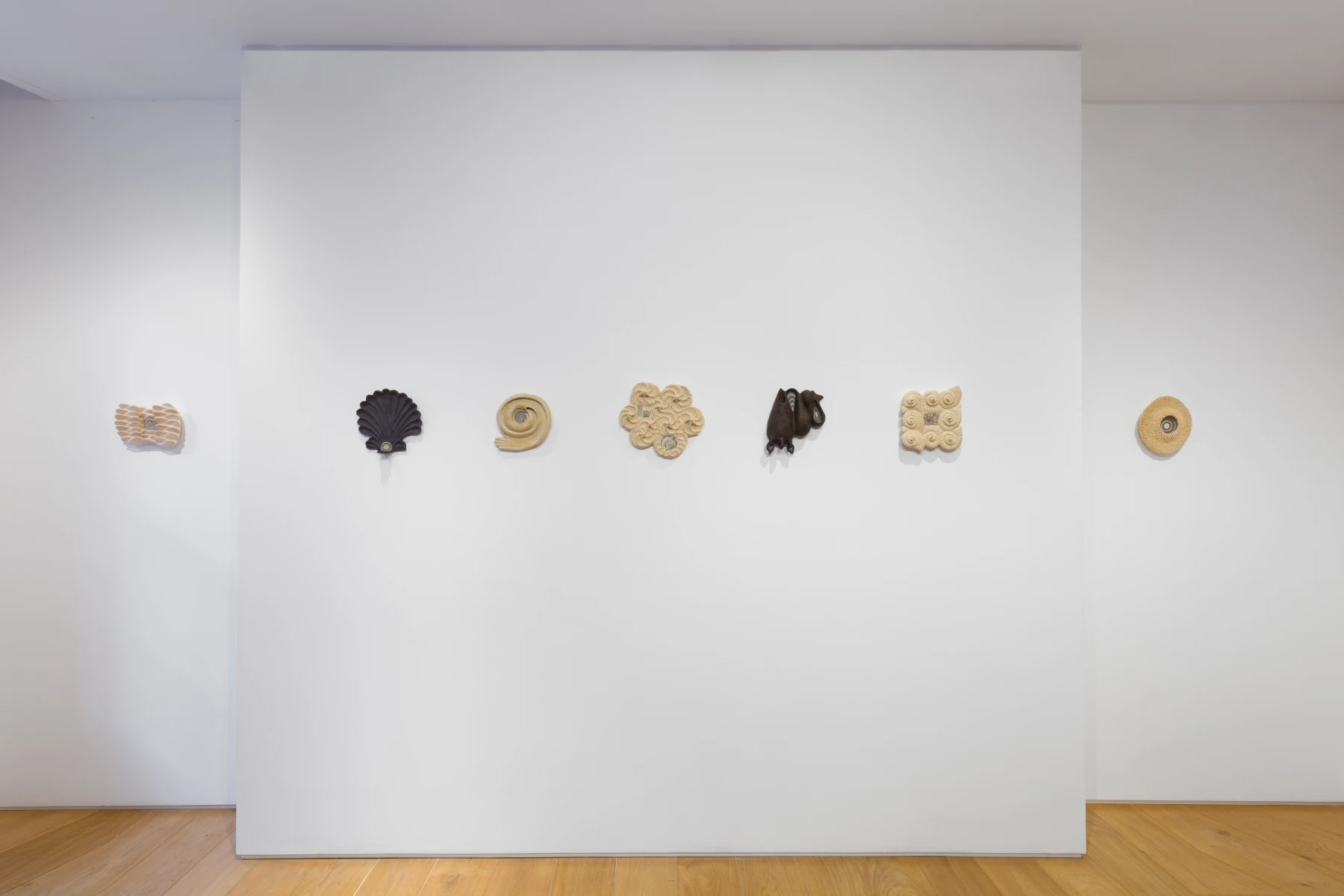Open: Tue-Fri 11am-6pm, Sat 11am-4pm
32 St. George Street, W1S 2EA, London, United Kingdom
Open: Tue-Fri 11am-6pm, Sat 11am-4pm
Visit
Ayla Tavares: Earendel
LAMB, London
Thu 21 Nov 2024 to Sat 18 Jan 2025
32 St. George Street, W1S 2EA Ayla Tavares: Earendel
Tue-Fri 11am-6pm, Sat 11am-4pm
Artist: Ayla Tavares
LAMB Gallery presents Earendel, a solo exhibition of new work by Ayla Tavares (b. 1990, Rio de Janeiro) and her first solo presentation in the UK. Starting from the recent discovery of Earendel—the most distant star detected to date, an illuminated remnant from the universe’s first billion years—Tavares considers the interplay between archaeological and sacred artefacts, daily objects and cosmic events to evoke connections between past and present. In this new body of work, she presents four unique series of ceramic reliefs, graphite drawings, and sculptural installations to explore how objects embody magical layers of time and memory, much like celestial bodies that carry traces of the universe's earliest moments.
The exhibition space is divided into three sections: materia materia, constellations or building a sandcastle, and sonante 15. Visitors first encounter materia materia, a series of wall pieces that explore various narratives possible with clay, each piece about the size of an open palm. Tavares' focus on ceramics, with their perceived eternal quality, allows her to investigate a sense of layered history. Uncovered and preserved by archeologists, ceramics hold stories within their forms, functioning like sacred structures of human experience and cultural memory– an oral history shaped by the hands. These ceramic wall pieces themselves capture vast narratives in their organic forms, representing everything from natural forces like tectonic shifts and the rhythm of the oceans to cosmic events like star formations. Looking at the scientific concept of the Kármán line, which marks the boundary between the Earth’s atmosphere and outer space, Tavares explores the complex relationship and metaphors implied between these two realms. The line serves as a conceptual divide which separates material and tangible objects from the abstract concepts of space, time, and memory. However, in her work Tavares articulates the relationship between phenomena and materiality, effectively blurring the perceived boundaries between the concrete and the intangible by naming celestial occurrences and representing them through physical objects.
The constellations or building a sandcastles series emphasizes the universally-resonant interconnectedness of the cosmos, with Tavares’ totems (or sandcastles) grouped into clusters as individual stars, forming constellations. The constellations or building a sandcastle installation, in a totem format reminiscent of a sandcastle, features graphite drawings of Western and non-Western constellations, sometimes formed by the same grouping of stars, and earthly myths from different cosmogonies that begin to name and justify the positions of stars in the sky. Next to them, are also sea stars known as Deep Sea Brittle Star, echinoderms present in the history of civilizations for a long time, with the first graphic representations of these animals probably being frescoes produced on the Island of Crete in Greece, dating back to 4,000 years ago.
Tavares masterfully joins forms and objects to generate new relationships and paths of thought which reach beyond the limits of materiality. As a child, Tavares’s mother sang her to sleep with the Portuguese lullaby “Estrela-do-mar,” a tale of longing, where a grain of sand yearns each night for a star, separated by light years. Here is a narrative of wonder and curiosity which transforms the impossible into the tangible when a starfish, an embodiment of earth, space and sea, comes into creation and bridges the worlds. Departing from the nostalgic song, Tavares’ constellations or building a sandcastle look into the intricate interplay between the terrestrial and the cosmic, exploring how disparate elements can intertwine and resonate across time and space.
The final room of the exhibition showcases sonante 15 which highlights the dynamic, rhythmic relationship between ceramics, their surroundings, and the body. Tavares, considering ceramics as a “living”medium, places these works so they curve gently around the space, inviting a sensory exploration. The installation draws on the Spanish pottery tradition of alfarería del agua, which utilizes clay vessels for storing liquids. The hollowed bodies of the Tavares’ clay works suggest an attention to sound, encouraging viewers not only to engage with ceramics visually, but also audibly.
Earendel offers a comprehensive exploration of Ayla Tavares’ practice, presenting four interconnected bodies of work that highlight her engagement with the materiality of ceramics and a range of methodologies drawn from astronomy, archeology, anthropology, mathematics and literature. Bridging her diverse influences, Tavares constructs a compelling narrative on how objects embody layers of time and memory, encouraging visitors to reflect on the ancient and enduring stories embedded within material forms.
Ayla Tavares (b. 1990, Rio de Janeiro) received her masters degree in Visual Arts from the Federal University of Rio de Janeiro (UFRJ) in 2021. She previously completed a degree in Art Anthropology at Casa França-Brasil in 2017. She currently lives and works between Rio de Janeiro, Brazil and Madrid, Spain. Her recent solo exhibitions include: 2024 - Things that move slowly (Athena Gallery - Rio de Janeiro, Brazil); 2023 - Ustão (Eva Klabin House Museum - Rio de Janeiro, Brazil); 2022 - Alfarería del agua (Collegium Museum - Arévalo, Spain); 2019 - Sonantes (Light Cultural Center - Rio de Janeiro, Brazil). In 2022, Tavares completed residency programs at Pivô Pesquisa (São Paulo, Brazil) and Entre tiempos (Collegium Museum - Arévalo, Spain).
